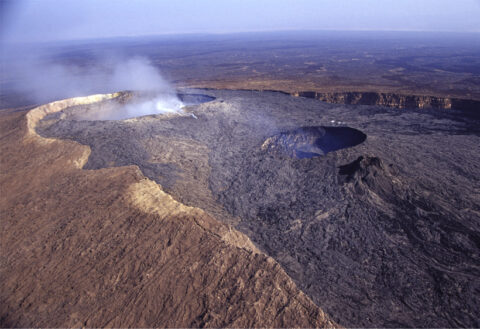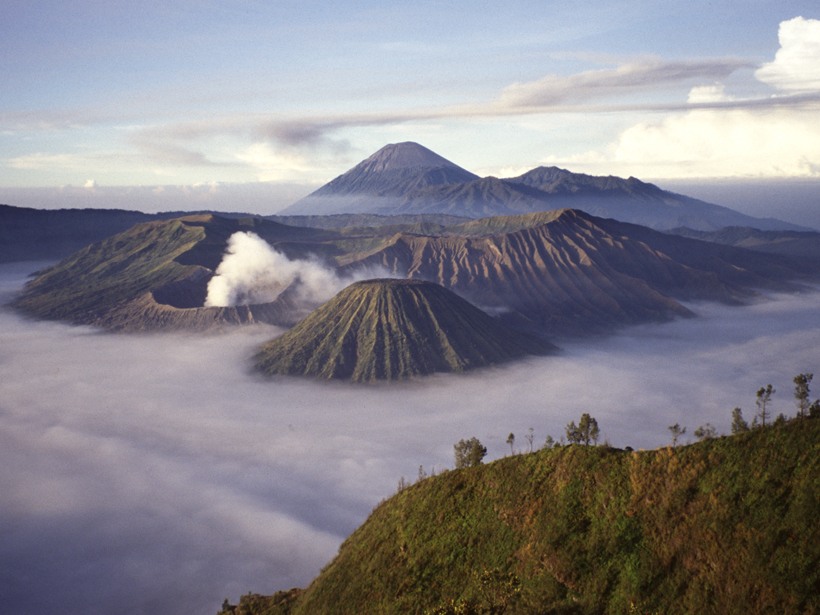Source: Reviews of Geophysics
They may not look like much, but caldera volcanoes pose a greater threat to humans than other volcano types. Rather than forming stereotypical cone-shaped peaks, caldera volcanoes are sunken depressions that can be tens of kilometers across and several kilometers deep. The magmatic systems beneath calderas tend to be labyrinthine, long-lived, and massive—often containing more than 1000 cubic kilometers of magma. When pressurized gasses within these systems are released, they produce intense eruptions that have altered global climate several times throughout Earth’s history. Because many urban regions have grown around or within calderas, volcanologists are hard-pressed to improve eruption forecast.
Every recorded eruption is preceded by unrest—anomalous phenomena such as earthquake swarms, rising or sinking of land, and gas emissions. For example, before an eruption, uplift rates within calderas can spike from millimeters per year to meters per day. Unfortunately, using unrest to predict eruptions is complicated by the fact that unrest can precede eruptions by mere hours or many years—and sometimes there is no eruption at all. Still, understanding unrest provides scientists with a peek inside the inner workings of volcanoes, a necessary step toward forecasting eruptions.

Over the past 3 decades, improvements in monitoring technologies have provided scientists with more precise and comprehensive information on the unrest processes at calderas. Acocella et al. collected data from publications, observatories reports, and Smithsonian Institution Global Volcanism Program (GVP) reports on unrest between 1988 and 2014 at 42 active calderas, including Long Valley Caldera in eastern California and Yellowstone, among the most seismically and volcanically active regions of the world.
The authors found that unrest episodes eventually terminated in eruptions at 31 of the calderas, but all of the calderas experienced at least one episode of unrest over the 26-year period, and 12% were continuously restless for the entire study period, indicating that unrest is a normal and expected occurrence in calderas. The study also found that mafic calderas—volcanoes that erupt mainly basalt—were more likely to erupt in response to unrest. However, the authors note, the study contained almost twice as many mafic calderas as felsic ones—volcanoes where magma is more silicic. In general, mafic calderas experienced shorter cycles of unrest, whereas felsic calderas experienced long-term unrest that drastically increased just before eruptions. The amount of degassing of the caldera is another important feature influencing the type of unrest.
Seismicity was the most frequent and reliable indicator of eruption timing and location; surface deformation, although a frequent form of unrest, was not always a reliable indicator of eruptions. The study findings indicate that both the composition and loss of volatiles from the magma can influence the likelihood that unrest will lead to an eruption, which may help scientists better forecast eruptions in the future. (Reviews of Geophysics, doi:10.1002/2015RG000492, 2015)
—Kate Wheeling, Freelance Writer
Citation: Wheeling, K. (2016), Forecasting eruptions at restless calderas, Eos, 97, doi:10.1029/2016EO044043. Published on 26 January 2016.
Text © 2016. The authors. CC BY-NC 3.0
Except where otherwise noted, images are subject to copyright. Any reuse without express permission from the copyright owner is prohibited.

